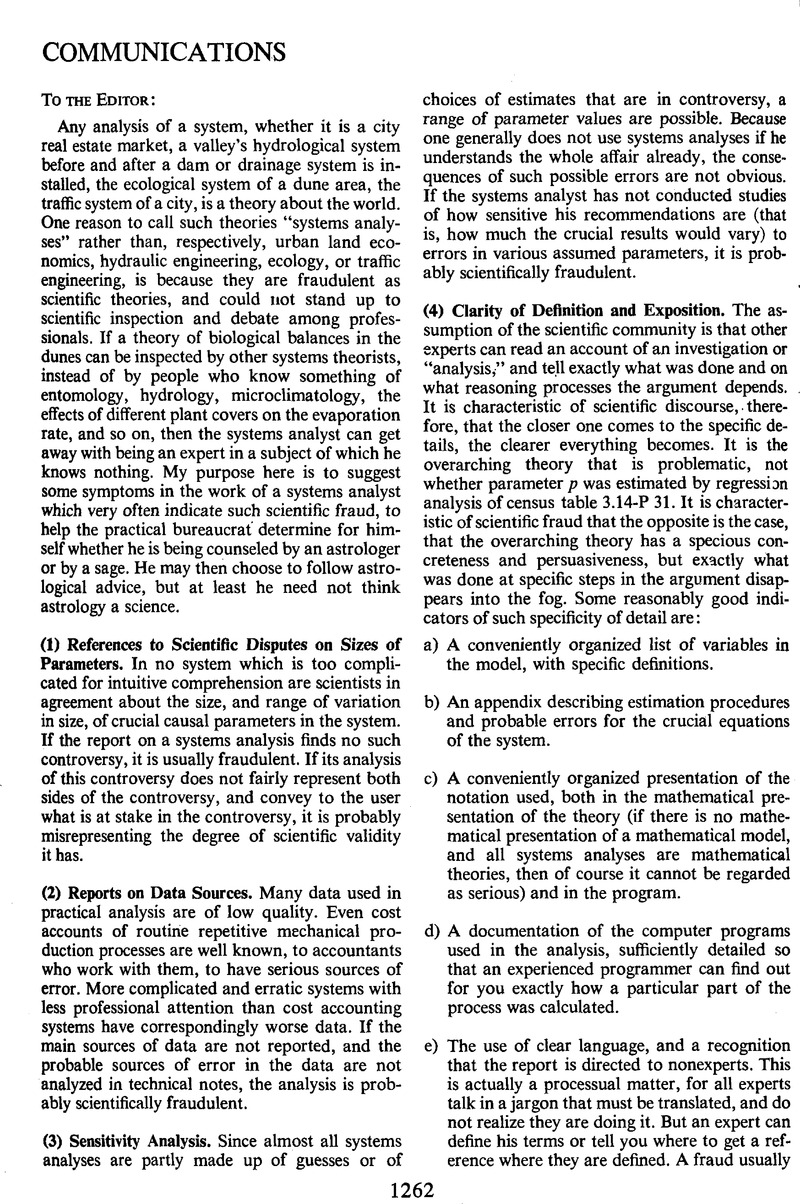No CrossRef data available.
Published online by Cambridge University Press: 01 August 2014

page 1264 note 1 See Seymour Sacks and Robert Harris, “The Determinants of State and Local Government Expenditures and Intergovernmental Flows of Funds,” National Tax Journal, 17 (March, 1964), 75-85; Roy W. Bahl and Robert J. Sanders, “Determinants of Changes in State and Local Government Expenditures,” National Tax Journal, 18 (March, 1965), 50-57; Jack W. Osman, “The Dual Impact of Federal Aid on State and Local Government Expenditures,” National Tax Journal, 19 (December, 1966), 362-372; Louis J. James, “The Stimulation and Substitution Effects of Grants-In-Aid: A General Equilibrium Analysis,” National Tax Journal, 26 (June, 1973), 251-265.
page 1265 note 1 The ethos theory was first articulated in Banfield, Edward C. and Wilson, James Q., City Politics (New York: Vintage Books, 1963, reprint)Google Scholar, esp. chaps. 3, 16. Shortly thereafter, the thesis appeared in slightly altered form: Wilson, James Q. and Banfield, Edward C., “Public-Regardingness as a Value Premise in Voting Behavior,” American Political Science Review, 58 (December, 1964), 876–887CrossRefGoogle Scholar. For an early controversy over the application of the theory, cf. Raymond E. Wolfinger and John Osgood Field, “Political Ethos and the Structure of City Government,” ibid., 60 (June, 1966), 306–326; and James Q. Wilson and Edward C. Banfield, “Communications,” ibid., 60 (December, 1966), 989–999.
page 1265 note 2 Wilson, James Q. and Banfield, Edward C., “Political Ethos Revisited,” American Political Science Review, 65 (December, 1971), 1048–1062CrossRefGoogle Scholar.
page 1265 note 3 Roger Durand's test of the concept against individual-level data has raised serious doubts about its empirical validity. “Ethnicity, ‘Public-Regardingness,’ and Referenda Voting,” Midwest Journal of Political Science, 16, 2 (May, 1972), 259–268CrossRefGoogle Scholar. And a cogent and well-reasoned analytical incision by Timothy Hennessy has raised serious doubts about ethos theory's conceptual validity. “Problems in Concept Formation: The Ethos ‘Theory’ and the Comparative Study of Urban Politics,” ibid., 14, 4 (November, 1970), 537–564.
page 1265 note 4 Wilson, and Banfield, , “Political Ethos Revisited,” p. 1051Google Scholar. The conclusion based on immigrants is drawn from the lack of statistical significance. We are compelled to call attention to this all-too-common error of using significance tests on data gathered with nonsimple random sample designs. Cf. Kish, Leslie, Survey Sampling (New York: John Wiley & Sons, 1965), pp. 582–593Google Scholar. As for the distinction between immigrant generations, ignoring the issue of calculation, the differences seem to be substantively trivial.
page 1265 note 5 Wilson, and Banfield, , “Political Ethos Revisited,” p. 1050Google Scholar.
page 1265 note 6 Hawkins, Brett W. and Prather, James E., “Measuring Components of the Ethos Theory: A First Step,” Journal of Politics, 33, 3 (August, 1971), pp. 642–658CrossRefGoogle Scholar.
page 1265 note 7 Wilson, and Banfield, , “Political Ethos Revisited,” p. 1057Google Scholar.
page 1265 note 8 A substantial body of literature has been developed which indicates that highly differentiated, wide-ranging, and coherent political belief systems of the type Wilson and Banfield refer to are generally restricted to the upper SES echelons of the populace. Cf. e.g., Converse, Philip E., “The Nature of Belief Systems in Mass Publics,” in Ideology and Discontent, ed. Apter, David E. (New York: The Free Press, 1964), pp. 206–261Google Scholar; Campbell, Angus, Converse, Philip E., Miller, Warren E., and Stokes, Donald E., The American Voter (New York: John Wiley & Sons, 1960), pp. 168–265Google Scholar; McClosky, Herbert, Hoffman, Paul J., and O'Hara, Rosemary, “Issue Conflict and Consensus among Party Leaders and Followers,” American Political Science Review, 54 (June, 1960), 406–427CrossRefGoogle Scholar; and Herbert McClosky, “Consensus and Ideology in American Politics,” ibid., 58 (June, 1964), 361–379.
page 1265 note 9 Cf. Kaufman, Herbert, “Review of City Politics,” American Political Science Review, 58 (June, 1964), 422CrossRefGoogle Scholar.
Comments
No Comments have been published for this article.